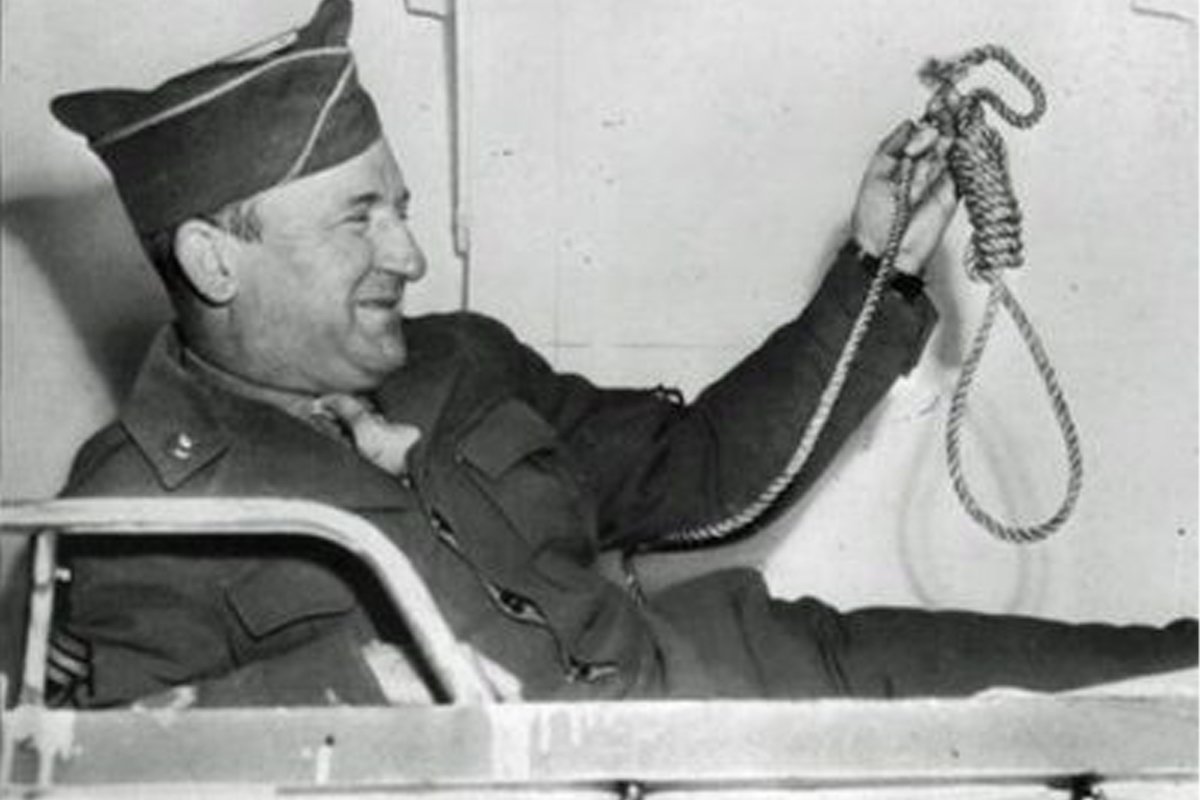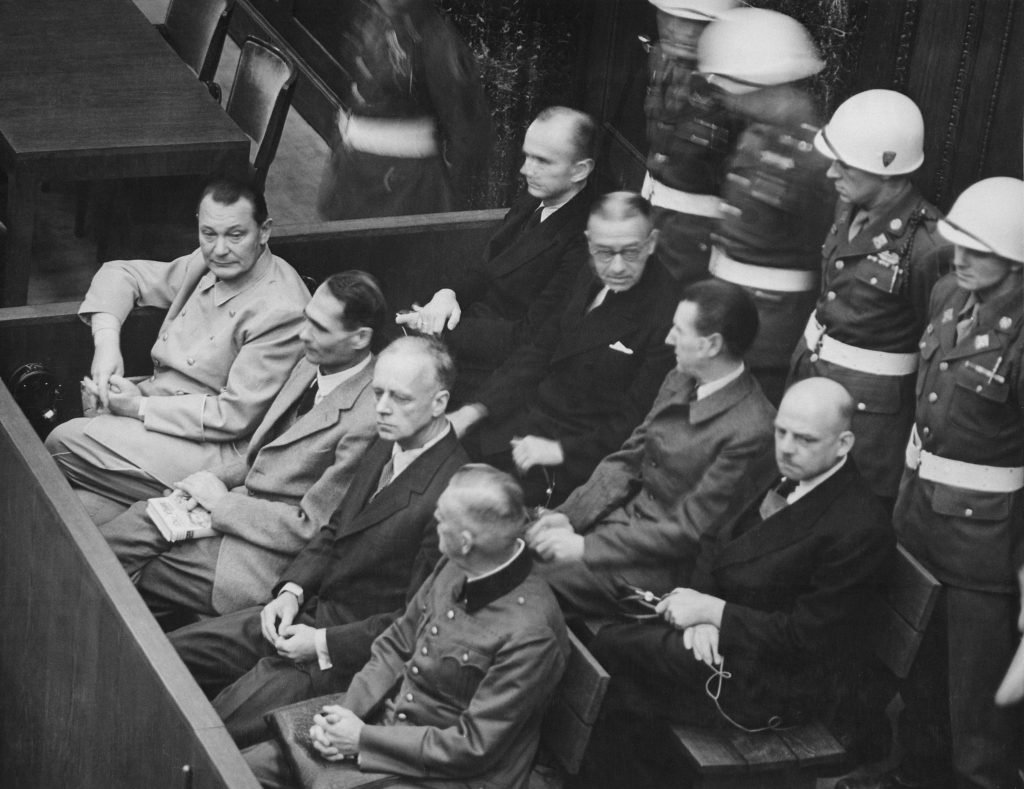The American Hangman: The Sadistic Executioner of Nazi War Criminals

Woods aboard a U.S. troop ship. Photo courtesy of the U.S. Army.
“Ten men in 103 minutes,” Master Sergeant John C. Woods told the Sioux City Journal on Oct. 19, 1946, three days after the scheduled execution of Nazi war criminals convicted at the Nuremberg Trials. “That’s fast work.”
The executioner’s manifest was short one name. Two and a half hours before Joachim von Ribbentrop — an enabler of the Holocaust — walked his final steps through the doors of a bombed-out gymnasium to reach the gallows, Hermann Göring committed suicide in his prison cell. One of the most powerful Nazi leaders had requested to be finished off by firing squad. His request was denied. Rather than giving his captors the satisfaction of bringing his life to justice, he crushed a cyanide pill between his teeth, ending his life.

Ribbentrop, with a hood over his head, was given his own personalized noose, just as the other Nazi war criminals would also receive. They were each allowed their final words before the trap doors of the scaffold fell. “God protect Germany,” Ribbentrop cried out. “My last wish is that German unity should remain and that an understanding between the east and west will come about and peace for the world.”
Julius Streicher, the founder of the anti-Semitic newspaper Der Stürmer, which played an instrumental role in Nazi propaganda efforts, looked into Woods’ eyes and said, “The Bolsheviks will hang you, too, some day.”
“The ropes and hoods were burned up with the bodies,” Woods said, “leaving nothing for the souvenir hunters.” With the evidence erased and the interesting reasoning in the newspapers, questions began to arise as to why the Nazis were being strangled in a long, drawn-out death, as opposed to a quick snap of the neck as was typical in hangings. Nazi Field Marshall Wilhelm Keitel, one of Hitler’s most trusted Lieutenants, reportedly hung from a rope for 28 excruciating minutes before he succumbed to death.

“I used a different rope and a different hood on each man,” Woods told the newspaper reporter. “I fixed the nooses and stretched the ropes myself to make sure nothing would go wrong.” The deliberate acts of suffering were carried out by the 43-year-old executioner, who had a shady past of his own. Born and raised in Wichita, Kansas, Woods joined the U.S. Navy in 1929 only to go AWOL a few months later. As punishment, the Navy delivered a dishonorable discharge citing the “diagnosis of psychopathic inferiority without psychosis,” a comprehensive explanation commonly found in irredeemable criminals that show violent and antisocial characteristics.
Somehow he convinced a U.S. Army recruiter to allow him to enlist during World War II where he served in North Africa and saw action at Omaha Beach on D-Day. When the Army posted a recruitment for experienced executioners, Woods threw his name in the hat. He told them he had hung two criminals in Texas and two others in Oklahoma — however, no records could confirm or refute his claims. Woods professed to all who would listen how he had committed 347 successful hangings over the last 15 years.
“I hanged those 10 nazis at Nuremberg, and I’m proud of it,” he said. “I never saw a hanging go any better.”
On July 21, 1950, Woods fell into relative obscurity, working on the Eniwetok Atoll in the Pacific, the famed test site for nuclear weapons. The island was frequented by German scientists and engineers as a part of Operation Paperclip, a covert program to develop scientific and technological advancements to support the U.S. military’s prowess during the Cold War. While changing a lightbulb and standing in a pool of water, Woods was electrocuted. His death came faster than any of the Nazi war criminals he had executed.

Matt Fratus is a history staff writer for Coffee or Die. He prides himself on uncovering the most fascinating tales of history by sharing them through any means of engaging storytelling. He writes for his micro-blog @LateNightHistory on Instagram, where he shares the story behind the image. He is also the host of the Late Night History podcast. When not writing about history, Matt enjoys volunteering for One More Wave and rooting for Boston sports teams.
BRCC and Bad Moon Print Press team up for an exclusive, limited-edition T-shirt design!
BRCC partners with Team Room Design for an exclusive T-shirt release!
Thirty Seconds Out has partnered with BRCC for an exclusive shirt design invoking the God of Winter.
Lucas O'Hara of Grizzly Forge has teamed up with BRCC for a badass, exclusive Shirt Club T-shirt design featuring his most popular knife and tiomahawk.
Coffee or Die sits down with one of the graphic designers behind Black Rifle Coffee's signature look and vibe.
Biden will award the Medal of Honor to a Vietnam War Army helicopter pilot who risked his life to save a reconnaissance team from almost certain death.
Ever wonder how much Jack Mandaville would f*ck sh*t up if he went back in time? The American Revolution didn't even see him coming.
A nearly 200-year-old West Point time capsule that at first appeared to yield little more than dust contains hidden treasure, the US Military Academy said.












